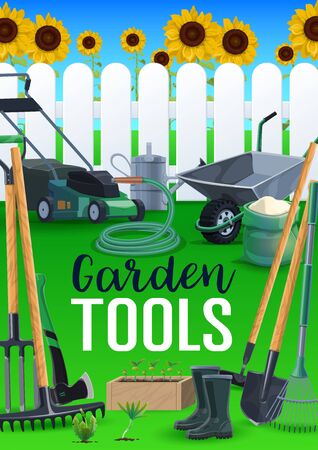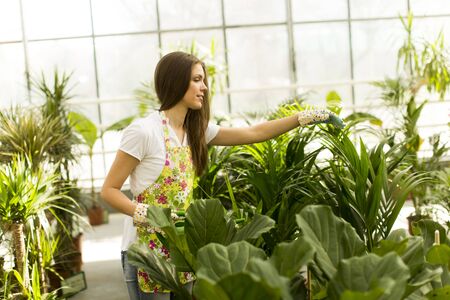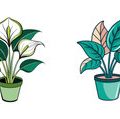Introduction to Indoor Herb Gardening
Indoor herb gardening has become a favorite hobby and practical solution for many Americans. Whether you live in a cozy apartment or a spacious suburban home, growing herbs inside offers a range of benefits that fit perfectly with the American lifestyle. One of the main reasons people in the U.S. love indoor herb gardening is the ability to enjoy fresh flavors all year long—no matter what the weather is like outside.
Having an indoor herb garden means you can easily snip fresh basil, mint, parsley, or rosemary right when you need them for your recipes. This not only adds vibrant taste to your meals but also saves you money at the grocery store. Plus, it’s convenient—your favorite herbs are always within reach, just steps away from your kitchen counter.
Another reason indoor herb gardening is so popular is that it’s easy to start, even for beginners. You don’t need a big backyard or fancy equipment. With just a sunny windowsill and the right containers or pots, anyone can grow healthy herbs indoors. Many people also find that caring for their indoor plants brings a sense of relaxation and satisfaction, making it a rewarding addition to daily life.
Why Americans Love Growing Herbs Indoors
| Benefit | Description |
|---|---|
| Fresh Flavors Year-Round | Enjoy homegrown herbs for cooking regardless of the season. |
| Convenience | Easy access to herbs right in the kitchen or nearby window. |
| Cost Savings | Reduce grocery bills by harvesting your own herbs. |
| Beginner-Friendly | No need for outdoor space; great for all skill levels. |
| Mental Wellbeing | Caring for plants can reduce stress and boost happiness. |
With these advantages, it’s no wonder more people across the United States are bringing herb gardens indoors and enjoying both the flavor and fun they add to everyday life.
2. Key Factors to Consider When Selecting Containers
Choosing the right containers and pots is crucial for a thriving indoor herb garden, especially in American homes and apartments where space and sunlight can be limited. Let’s break down the most important factors to keep in mind:
Drainage: Preventing Root Rot
Proper drainage is essential for healthy herbs. Most culinary herbs don’t like their roots sitting in water. Always look for containers with drainage holes at the bottom. If you fall in love with a decorative pot that doesn’t have holes, you can place a smaller nursery pot inside or add a layer of pebbles to help excess water escape.
Material: Matching Your Style and Needs
| Material | Pros | Cons | Best For |
|---|---|---|---|
| Ceramic (Glazed) | Stylish, retains moisture, many colors/styles | Heavier, may chip or crack, pricier | Living rooms, kitchen counters |
| Terracotta (Clay) | Breathable, classic look, affordable | Drys out quickly, can break easily | Sunny windowsills, herbs needing drier soil (like rosemary) |
| Plastic | Lightweight, inexpensive, easy to clean | Less breathable, sometimes less attractive | Apartments with limited shelf support or hanging gardens |
| Metal | Sleek look, durable, modern style | No natural drainage unless drilled; can get hot in direct sun | Decorative displays away from direct heat sources |
| Bamboo/Fabric Grow Bags | Sustainable, lightweight, good air flow for roots | May not last as long as hard materials; can be less stable upright | Small spaces, temporary setups or renters who move often |
Size: Giving Your Herbs Room to Grow
The size of your pot matters! Most indoor herbs do well in containers that are 6–8 inches in diameter. If you’re growing multiple herbs together (“herb gardens” or “windowsill planters”), make sure each plant has enough space—crowding can lead to poor airflow and more pests. For deep-rooted herbs like parsley or cilantro, choose deeper pots.
Portability: Flexibility for Sunlight and Seasons
If you live in an apartment or a home with limited window space, portability is key. Look for lightweight containers or those with handles so you can move your herbs closer to sunlight as needed. Some Americans use rolling plant stands or trays to easily shift plants from the kitchen counter to a sunny spot on the floor during winter months.
Quick Tips for American Homes and Apartments:
- Avoid oversized pots: They hold too much water and risk root rot.
- Select matching styles: Unify your kitchen look by choosing similar materials or colors for your herb containers.
- Add saucers: Protect your shelves and countertops from water stains by placing saucers under your pots.
- Consider self-watering pots: Great for busy households or forgetful gardeners!

3. Popular Container Types for Indoor Herbs
Choosing the right container is an important step in starting your indoor herb garden. The container you pick affects not only how your herbs look but also how well they grow. In American homes, several types of pots and containers are especially popular for growing herbs indoors. Here’s a look at some of the best options:
Terracotta Pots
Terracotta pots are a classic choice for indoor herb gardening. These clay pots have a warm, rustic look that fits right into many American kitchens and living rooms. Terracotta is porous, which means it allows air and moisture to move through the walls of the pot, helping to prevent overwatering and root rot. However, they can dry out quickly, so you’ll need to check the soil moisture more often.
Ceramic Planters
Ceramic planters come in all shapes, sizes, and colors, making them a great way to add personality to your indoor garden. They’re usually glazed on the outside, which helps retain moisture better than terracotta. Just make sure the ceramic planter has drainage holes at the bottom to avoid waterlogged roots.
Self-Watering Containers
If you tend to forget watering or travel often, self-watering containers can be a lifesaver. These pots have a built-in reservoir at the bottom that supplies water to your herbs as needed. This helps keep the soil consistently moist without risking overwatering. Self-watering containers are especially handy for herbs like basil and mint that enjoy steady moisture.
Recycled and Upcycled Options
Many Americans love to get creative with recycled containers—think mason jars, old mugs, tin cans, or even wooden boxes. Not only does this help reduce waste, but it also gives your indoor garden a unique, personal touch. If you use recycled items, make sure to add drainage holes or layer pebbles at the bottom to prevent soggy roots.
Comparison Table: Common Indoor Herb Containers
| Container Type | Main Features | Pros | Cons |
|---|---|---|---|
| Terracotta Pot | Porous clay material Classic look Good airflow |
Prevents overwatering Affordable Widely available |
Dries out quickly Can crack in cold temps |
| Ceramic Planter | Glazed finish Diverse styles/colors Keeps soil moist longer |
Decorative Holds moisture well Durable |
Heavier No drainage if unmodified |
| Self-Watering Container | Builtin reservoir Consistent moisture User-friendly design |
Easier plant care Avoids underwatering Great for busy people |
Tends to cost more Might hold too much water for some herbs |
| Recycled/Upcycled Container | Mason jars, cans, mugs etc. Sustainable option Diverse designs |
Eco-friendly Budget-friendly Adds character |
No drainage unless modified May require extra care |
No matter which type you choose, make sure your container has good drainage and is big enough for your herbs’ roots to grow. With the right pot or planter, your indoor herb garden will thrive and brighten up any room!
4. Best Pots for Small Spaces and Kitchen Counters
Not everyone has a big backyard or a dedicated gardening room, but that doesn’t mean you can’t enjoy fresh herbs at home! For many Americans living in apartments or homes with limited kitchen space, compact solutions make indoor herb gardening possible and easy. Here are some of the best containers and pots perfectly suited for small spaces and kitchen counters.
Windowsill Planters
Windowsill planters are long, narrow containers designed to fit snugly on your windowsill. They’re perfect for soaking up sunlight and growing multiple herbs together. Many options come with self-watering features or drainage trays to keep things neat and simple.
| Type | Main Feature | Best For |
|---|---|---|
| Plastic Windowsill Planter | Lightweight, often with built-in trays | Budget-friendly and easy to move |
| Ceramic Windowsill Box | Stylish designs, holds moisture well | Decorative kitchens and sunny windows |
| Self-Watering Planter | Built-in reservoir for less frequent watering | Busy lifestyles or forgetful gardeners |
Hanging Pots and Vertical Gardens
If counter space is tight, hanging pots or vertical garden systems are a smart way to use wall space. These options are popular in urban apartments where every inch counts. You can hang them from hooks under cabinets or mount vertical planters right on the kitchen wall.
- Macrame Hanging Pots: Trendy and space-saving, these add a decorative touch above your sink or by a sunny window.
- Wall-mounted Pocket Planters: Made from felt or plastic, these allow you to grow several herbs vertically without taking up any counter space.
- Tiered Hanging Baskets: Perfect for grouping different herbs together in one spot, ideal for renters who don’t want to drill into walls.
Countertop Herb Gardens
Small countertop herb gardens are tailored for American kitchens—compact, mess-free, and sometimes even high-tech. Many kits include everything you need: pots, seeds, soil, and instructions. Some advanced models feature built-in LED lights so you can grow herbs year-round, even if your kitchen lacks sunlight.
| Name/Type | Main Feature | Description |
|---|---|---|
| AeroGarden Harvest | LED Grow Lights & Hydroponic System | No soil needed; grows herbs fast with minimal effort. |
| Mason Jar Herb Kits | Mason jars as planters; compact size | Cute, classic Americana style—perfect for gifting or small kitchens. |
| Ceramic Countertop Pots Set | Durable, coordinated look; includes tray for drainage | Easily fits on most countertops; keeps things tidy. |
Tips for Choosing Small-Space Herb Pots:
- Look for drainage holes: Prevents overwatering and root rot.
- Select lightweight materials: Easier to move around when cleaning or rearranging.
- Picks sets with matching trays: Keeps your counters clean and organized.
- Consider stackable or multi-tier options: Great for maximizing vertical space in tight quarters.
5. Creative and Sustainable Container Ideas
Indoor herb gardening is not just about growing fresh flavors for your kitchen—it’s also a chance to express your creativity and embrace sustainable living. Many American gardeners are turning to eco-friendly containers, using everyday items in new ways that reflect popular DIY trends across the country. Here are some fun and practical ideas for containers that are both good for your herbs and kind to the planet.
Repurposed Mason Jars
Mason jars are a classic choice for indoor herb gardens. They’re affordable, easy to find at stores like Target or Walmart, and have a rustic charm that fits perfectly with modern American home décor. With clear glass, you can keep an eye on soil moisture and root health. Just remember to add small pebbles or activated charcoal at the bottom for drainage since most mason jars don’t have holes.
Wooden Boxes and Crates
Wooden boxes—like old wine crates or fruit baskets—make stylish, sturdy planters. You can often pick these up at local farmers’ markets or thrift stores. Lining the inside with plastic or burlap helps protect the wood from moisture while keeping your herbs healthy. Customize them with paint or stencils for a personal touch!
Upcycled Household Items
The U.S. DIY scene loves upcycling, which means giving a second life to things you might otherwise throw away. Coffee cans, teacups, tin buckets, or even old boots can become unique pots for your indoor herbs. Get creative—just make sure whatever you use is clean and safe for plants.
Comparison Table: Sustainable Container Options
| Container Type | Eco-Friendly? | DIY Difficulty | Best For |
|---|---|---|---|
| Mason Jars | Yes | Easy | Small herbs (basil, chives) |
| Wooden Boxes/Crates | Yes (if reused) | Moderate | Larger herb collections |
| Upcycled Items (cans, cups, etc.) | Yes | Varies by item | Unique displays or gifts |
Sustainable Tips for Your Indoor Herb Garden
- Add Drainage: Drill small holes or layer rocks at the bottom of non-traditional containers to prevent soggy roots.
- Avoid Chemicals: If reusing containers, wash thoroughly to remove residues that could harm your herbs.
- Personalize: Decorate your containers with leftover craft supplies for a fun, custom look that matches your space.
- Label Clearly: Use chalkboard paint or wooden sticks to label each herb—especially helpful if you’re growing several types together!
Choosing creative and sustainable containers not only helps the environment but also makes your indoor herb garden truly one-of-a-kind—just like your favorite homemade recipes.
6. Tips for Maintaining Healthy Herbs Indoors
Keeping your indoor herb garden thriving is easier when you know what your plants need. Here are some practical American tips to help you care for your herbs in the best containers and pots.
Watering Your Indoor Herbs
Overwatering is a common mistake with indoor herbs. Always check the soil before adding water. Most herbs prefer soil that is moist but not soggy. Use pots with drainage holes to avoid root rot. Here’s a quick guide to watering frequency:
| Herb Type | How Often to Water | Container Recommendation |
|---|---|---|
| Basil | Every 2-3 days or when top inch of soil is dry | Ceramic or terracotta pot with drainage holes |
| Mint | Every 3-4 days, keep soil slightly damp | Plastic pot with saucer to catch extra water |
| Rosemary | Once a week, let soil dry out between watering | Unglazed clay pot for better airflow |
| Parsley | Every 2-3 days, do not let soil dry out completely | Ceramic pot with drainage holes |
Light Placement for Best Growth
Your herbs will grow best with plenty of natural light. Place your pots on a sunny windowsill that gets at least 6 hours of sunlight daily. South-facing windows usually get the most sun in the U.S. If natural light is limited, consider using LED grow lights designed for indoor plants.
Light Needs by Herb Type
| Herb Type | Light Requirement | Container Placement Tip |
|---|---|---|
| Basil, Oregano, Thyme | 6+ hours direct sunlight daily | South or southwest-facing window, rotate pots weekly for even growth |
| Mint, Parsley, Cilantro | 4-6 hours indirect sunlight daily | East or west-facing window, avoid harsh afternoon sun in hot climates |
| Chives, Chervil, Tarragon | Bright indirect light preferred | Shelf near a bright window, avoid direct midday sun exposure |
Managing Humidity Indoors
Drier indoor air—especially during winter—can stress your herbs. To boost humidity:
- Group containers together: Plants release moisture through their leaves and benefit from shared humidity.
- Use a pebble tray: Fill a shallow tray with pebbles and water; place your pots on top (not sitting in water) so evaporation increases moisture around the plants.
- Mist leaves occasionally: Lightly mist your herbs’ leaves with water every few days if air feels dry.
Pots That Help with Humidity Control:
- Ceramic pots: Hold moisture longer and are good for herbs that like consistent humidity.
- Terracotta pots: Allow some evaporation but may require more frequent watering.
Extra Tips for Happy Herbs in Pots and Containers:
- Avoid crowding: Give each herb enough space so air can circulate and leaves aren’t touching too much.
- Rotate containers: Turn your pots every few days so all sides get even sunlight.
- Select the right size: Use containers at least 6 inches wide and deep for most herbs to encourage healthy root growth.
Caring for your indoor herbs in the right containers makes all the difference—follow these simple tips to enjoy fresh flavors year-round!


